Join More Than 50,000+ Subscribers and get latest camera news and rumors
NEW CAMERA VIDEOS ON YOUTUBE
|
By admin, on May 20th, 2024
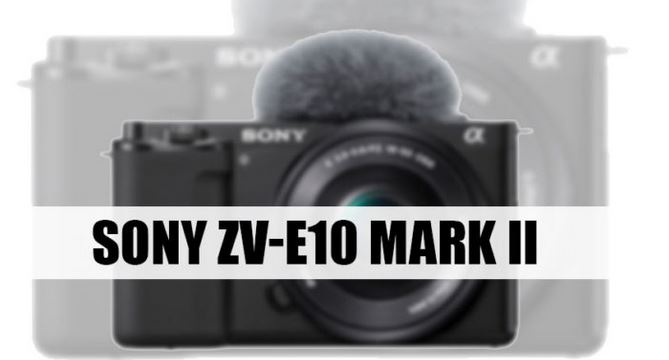
According to the latest rumors from the rumor mill, the Sony ZV-E10 camera is delayed. Sources of the rumor mill, suggest that it will be available in August 2024.
— End of rumor —
This is not the first time this year that there has been a delay; the announcement of the 16-25mm G was also delayed by over a month. This lens was supposed to be announced at the end of February but was delayed until mid-April. The 85mm GM II is still scheduled to be released in June, but it is unclear when the 24-70mm F2.0 will be announced. This lens was supposed to be released in early summer.
Rumors about the ZV-E10II have been circulating for quite some time, but it seems it will still be a while before it is announced. The Z6III and EOS R5 Mark II have also arrived much later than originally rumored, so each company may be taking some time to comply with EU regulations, why Fuji is out of the race since they are not using AI algorithms like Canon, Nikon, and Sony in their cameras.
Further added, The EU’s AI laws seem to be quite strict. Japanese companies are forced to do a considerable amount of work they have not done before, such as building schemes and publishing technical documents.
If this happens, it seems that there will be no withdrawal from the market, but since the maximum fine is 7% of annual sales, it is likely that the product will not be able to be released easily. In particular, it is expected that this will spread not only to the EU but also to North America and Asia in the future, so it is predicted that it will be difficult if proper measures are not taken here.
- 26MP Exmor R APS-C BSI CMOS Sensor
- BIONZ XR Image Processor
- Dedicated AI Chip / AI Auto framing and advanced AF modes
- UHD 4K 120p [crop] 4K 60p Uncropped / FHD 240p / 10-Bit 4:2:2
- Up to 11-fps Shooting, ISO 100-32000
- Real-Time Tracking AF for Stills & Video
- 759-Point Phase Detection, 93% Coverage
- S-Log3, S-Gamut3, S-Cinetone, User LUTs
- NO EVF – Same Body Desing as ZV-E10
- Internal Mic + Inputs, USB Streaming
- 3″ 1.03m-Dot Vari-Angle LCD Touchscreen
Price Sony ZV-E10 [Rumored Price approx]
- Price $798 [Bodly Only] | $899 With 16-50mm Lens | $1199 Creator Kit (Wireless grip + Shotgun Mic) | $1399 with 10-20mm Lens
Follow us on our social pages FACEBOOK | TWITTER | INSTAGRAM, If you have time –>see more Camera News and Sony Alpha Rumor
source SAR website
By admin, on May 20th, 2024

We have a $500 discount on the Blackmagic Design Pocket Cinema Camera 6K, and this particular discount is for a limited time until stocks last. So if you are interested in getting a Blackmagic 6K camera, this is the best time to buy it.
Major core specification of the camera
Super 35 HDR Sensor, Gen 5 Color Science
Canon Active EF Mount, Mini XLR Inputs
5″ Tilting LCD Touchscreen
Does Not Have Internal ND Filters
Record 6K 6144 x 3456 up to 50 fps
Record up to 120 fps Windowed 2.8K/1080p
CFast 2.0 & SD/UHS-II Card Slots
Dual Native 400 & 3200 ISO
Supports Optional Pro EVF
Supports Optional Pro Battery Grip
If you are completely new here, kindly note that Blackmagic cinema camera 6k doesn have AF, its a manual focus camera with ef mount.
By admin, on May 20th, 2024
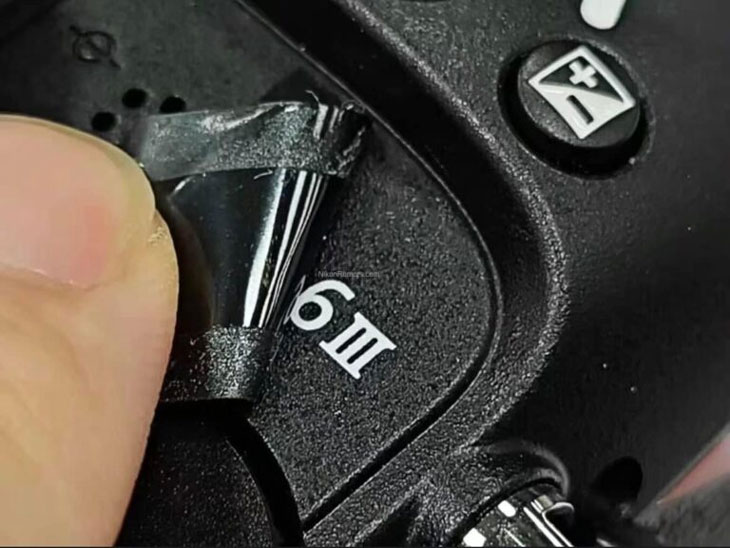
We have sorted out the list of Nikon cameras registered with the wireless certification agency, so in total we have FOUR registered cameras waiting to arrive in the year 2024. One of these cameras is without a doubt the Nikon Z6 Mark III, which is about to arrive soon within a matter of weeks. The next two cameras are unknown, but if you look at the details, it looks like they are also high-end cameras, not kind of entry-level, based on the initial wireless specifications they have on their registration page.

Nikon Z6 Mark III + 3 More ?
Among these two cameras, one can be the Nikon Z7 Mark III since, in general, we have seen that Nikon updates both cameras together. Hence, the Nikon Z6 Mark 3 is expected to arrive alongside the Nikon Z7 Mark 3.
The next camera, the third one, is completely unknown. A wild rumor has hit our mailbox that Nikon is also preparing to announce a direct competitor to the Canon R3 camera before the 2024 Olympics. This seems quite illogical to me since we already have the Z6 Mark 3 camera and the Z7 Mark 3. Expecting another high-end camera just after the announcement of the Z6 Mark 3 is unacceptable to me.
The Fourth one, again completely wild guess it’s the Nikon Z90, all the cameras we have discussed coming out from this list of Upcoming Nikon Cameras 2024
Registered Camera details



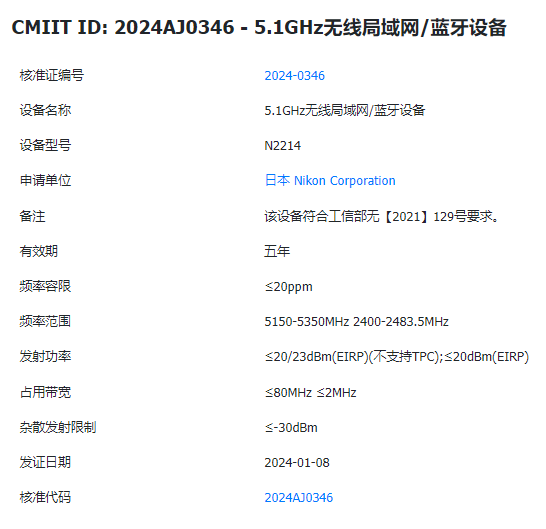
This post was first published on thenewcamera.com website
Follow us on our social pages FACEBOOK | TWITTER | INSTAGRAM to get live news + Nikon Rumors 24X7.
By admin, on May 18th, 2024
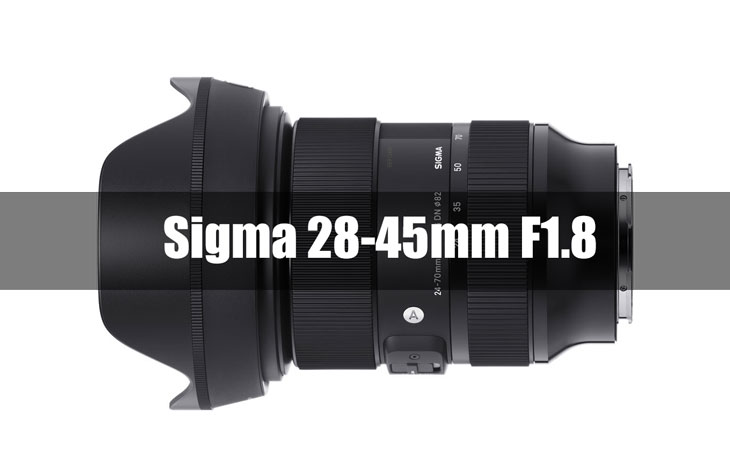
According to the latest rumors we have, Sigma is planning to announce a constant aperture zoom lens very soon for full-frame cameras, initially, it will be available for Sony E-Mount and L-Mount. The focal length of the lens is said to be 28 – 45 mm, and it will maintain a constant aperture of f/1.8 through the zoom range., so, that is an excellent move by Sigma, and I do hope and expect Tamron will also follow the same and soon announce some band new F1.8 Zoom Lenses for their FF Cameras.
Sigma was very popular with its APS-C DSLR lens, the 18 to 35 mm f/1.8, Let’s hope and expect after the announcement of the 28-45mm F1.8 Lens they should re-announce the same lens for Mirrorless mount too.
According to the information, the lens is specifically designed for video and content creation purposes as well as pro photographers, will you buy this lens let me know
also see – Sony ZV-E10 Mark II Specification
Follow us on our social pages FACEBOOK | TWITTER | INSTAGRAM, If you have time –>see more Camera News and Sony Alpha Rumor
source SAR Youtube
By admin, on May 17th, 2024

We have published the leaked specification of the Canon R1, since it appeared on the Adorama website a while, now I have just received an email from Adorama clarifying things up
We at Adorama sincerely apologize for any confusion caused by the misinformation shared about the Canon EOS R1. We did not receive official specifications or details directly from Canon. We have removed this information from our website.
This is what Adorama officials said about the leaked information, do share your thoughts over this in the comment box thank you
Get LIVE RUMORS –> FACEBOOK | TWITTER | INSTAGRAM to get live news + Canon rumors 24X7
By admin, on May 16th, 2024
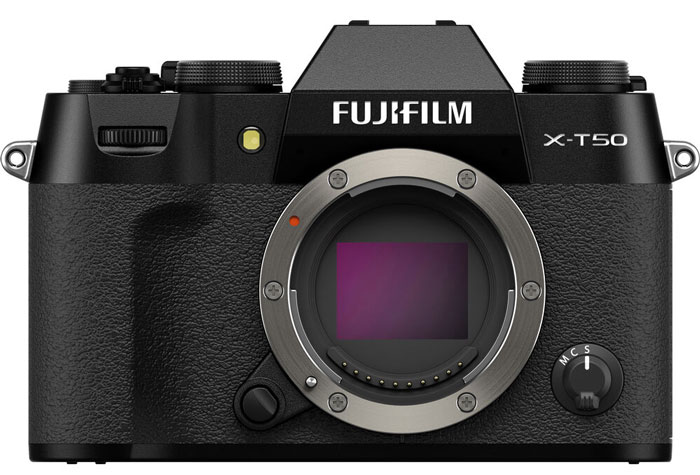
Finally, the Fuji XT50 camera has been announced. The camera features the same 40-megapixel sensor and the ability to record 4K video up to 60 frames per second, and full HD video up to 40 frames per second, as we have told you in the past. The camera features exceptional core specifications and its price makes it the first Fuji entry-level XT series camera to feature sensor-shift image stabilization. Take a look at the details in the press release and the major specifications of the camera.
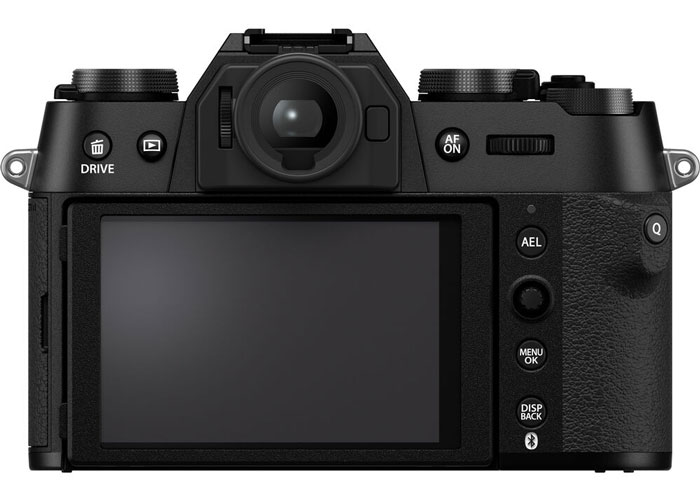
Fuji X-T50 Camera Major Specification
- 40.2 million pixel X-Trans CMOS image sensor
- X-Processor 5 processor
- 425 focus points
- 3-inch tilting touch LCD screen
- Mechanical continuous shooting speed of 8fps, electronic continuous shooting speed of 20fps
- Body stabilization up to 7 stops
- Built-in 1.4x / 2.0x digital teleconverter
- Body film filter dial
- 20 film filters
- Single UHS-II SD memory card slot
- NP-W126S battery, capable of shooting approximately 390 images
- 6.2K30p, 4K60p video recording
- F-Log2, ProRes, and BlackMagic RAW
- Available in black and silver body colors
Fuji X-T50 Latest Price
Fuji X-T50 pre-order from B&H Store
Fuji X-T50 Camera silver edition [ordered from here]
Fuji X-T50 with 15-45 F3.5-5.6 [B&H Store]
Fuji X-T50 + XF 16-50mm F2.8-1.8 Lens [B&H Store ]
Fuji X-T50 Press Release
Calling All Creatives: Fujifilm Announces FUJIFILM X-T50 Mirrorless Digital Camera and FUJINON XF16-50mmF2.8-4.8 R LM WR Lens
Latest X Series Camera and Lens Offer Solutions for Creatives on the Go
VALHALLA, N.Y., May 16, 2024 – FUJIFILM North America Corporation, Electronic Imaging Division, today announces the launch of its FUJIFILM X-T50 mirrorless digital camera (X-T50), designed with the similar manual controls and classic camera styling of FUJIFILM X100VI and other X100 Series fixed-lens cameras, but with the flexibility of interchangeable lenses for those who seek added versatility in their everyday carry camera. Also introduced today is FUJINON XF16-50mmF2.8-4.8 R LM WR lens (XF16-50mm) featuring a versatile focal length range, making it suitable for a broad range of applications, from wide-angle landscape and architectural photography to portrait photography. With their lightweight designs and compact form factors, these new X Series innovations are designed for active image makers.
“Passionate creatives are ready to grab their gear and create content at any given moment,” said Victor Ha, vice president, Electronic Imaging Division and Optical Devices Division, FUJIFILM North America Corporation. “X-T50 and XF16-50mm are made to be everyday-carry items; lightweight, comfortable tools that can be thrown in a bag for folks that are on the move. X-T50 is a great example of how we are keeping creativity top of mind for our users. From the dedicated Film Simulation dial to AI-based subject detection autofocus, X-T50 is more than ready the moment inspiration of any kind strikes.”
X-T50 Mirrorless Digital Camera
Dedicated Film Simulation Mode Dial
- For the first time on any X Series camera, X-T50 features a dedicated Film Simulation dial for fast, easy access to a wide variety of Fujifilm Film Simulations. There are a total of 20 Film Simulation modes available for X-T50 including the recently introduced REALA ACE mode, which combines true-to-life color reproduction and crisp tonal gradations. The new Film Simulation dial is incorporated on the top plate, allowing users to intuitively switch between the included Film Simulation modes with ease.
40.2 Megapixel X-Trans CMOS 5 HR Sensor
- X-T50’s compact and lightweight body weighs approximately 438 grams (15.45 ounces)1, and features the X Series’ popular back-illuminated 40.2 megapixel X-TransTM CMOS 5 HR sensor and the high-speed image processing engine X-Processor 5. The latest image processing algorithm in the fifth generation X Series cameras delivers high resolution while maintaining a high signal-to-noise ratio. X-T50 is compatible with all X Series lenses, and the sensor’s high pixel count of approximately 40.2 megapixels is maximized by the digital teleconverter function2, allowing images to be magnified by either 1.4x or 2x. X-T50’s pixel structure allows light to be captured efficiently; with ISO 125, the electronic shutter can be set to a shutter speed of up to 1/180000 second, achieving highly precise control of exposure time.
In-body Image Stabilization (IBIS) and Auto mode
- X-T50 is equipped with a 5-axis IBIS function with a maximum of 7.0 stops3. While maintaining the mobility that has been a key feature of previous X Series models, X-T50 enables comfortable, hand- held image making, even in low light. Equipped with an AI-based subject detection autofocus (AF) developed using deep learning technology, X-T50 can detect animals, birds, cars, motorcycles, bicycles, airplanes, trains, insects, and drones4. When in Auto mode, X-T50 detects the subject and tracks it while keeping it in focus, making it easy to create high-quality still images and movies.
6.2K/30P and 4K/60P video capabilities
- For video creators, 6.2K/30P recording is available. Tracking AF functionality is also available for high-quality video recording.
- X-T50’s extensive 13+ stop dynamic range on F-Log2 is perfect for color grading.
Sophisticated product design
- X-T50 features a 1.84 million-dot, tiltable rear LCD monitor inside a new, rounded body and grip, designed to fit comfortably in the hand while maintaining a compact size.
- A pop-up flash integrated into the viewfinder is mounted on the top plate, automatically controlling the amount of light needed for dark scenes and backlit portraits.
Native Frame.io Camera to Cloud Connectivity
X-T50 offers an accessory-free, native Camera to Cloud integration for Adobe’s Frame.io, which allows users to wirelessly connect any X-T50 to an active internet connection, authenticate it to Frame.io, and automatically upload photos and videos just moments after they are created. This can drastically reduce the amount of time needed to reach the end of any post-production workflow. X-T50 is the latest X Series camera to integrate Frame.io’s Camera to Cloud technology, joining FUJIFILM X-H2, FUJIFILM X-H2S, FUJIFILM X-T5, FUJIFILM X-S20, and FUJIFILM X100VI mirrorless digital cameras in offering the capability.
FUJINON XF16-50mmF2.8-4.8 R LM WR Lens
XF16-50mm is a standard zoom lens that covers a focal length range from wide-angle 16mm (equivalent to 24mm in 35mm format) to medium telephoto 50mm (equivalent to 76mm in 35mm format). It offers high-speed and high precision autofocus, with magnification of 0.3x at the telephoto end (equivalent to magnification of 0.45x in 35mm format), allowing the user to get as close as approximately 4cm (1.4 inches) in minimum focusing distance throughout the zoom range and as close as 15cm (approximately 6 inches) from the front of the lens to the subject.
XF16-50mm features a weather resistant structure (weather sealing applied to 13 areas of the lens barrel) and is temperature resistant down to -10 degrees Celsius (14 degrees Fahrenheit), allowing for versatile use in a wide range of scenes.
Adopting a lens configuration of 9 groups and 11 elements, including 3 aspherical lenses and 3 extra- low dispersion (ED) lenses, XF16-50mm suppresses chromatic aberration and maintains high- resolution performance throughout the zoom range. In addition to its high-resolution performance, XF16-50mm also has a close-up capability equivalent to roughly half that of macrophotography in 35mm format, making it effective for photographing food, crafts, plants, and various everyday scenes.
Product Features
Lightweight Design
- By optimizing the placement of the lens, XF16-50mm has a weight of approximately 240 grams (8.5 ounces), making it the lightest zoom lens in the XF lens lineup to date.
- The constant-length design, in which the lens does not extend during zooming, provides a truly comfortable zoom operation for users.
Fast and accurate Autofocus
- XF16-50mm uses the inner focus method, which drives a compact and lightweight group of focus lenses with a linear motor. In addition, the high-speed and high precision autofocus system, achieved through the miniaturization of the focus lens group, creates accurate AF within approximately 0.015 seconds5.
Pricing and Availability for FUJIFILM X-T50 and FUJINON XF16-50mm
FUJIFILM X-T50 digital camera will be available in Black, Charcoal Silver, and Silver with expected availability in June 2024 at a Manufacturer’s Suggested Retail Price of $1,399.95 USD ($1889.99 CAD). Additionally, Fujifilm plans to introduce a kit featuring X-T50 and FUJINON XC15-45mmF3.5- 5.6 OIS PZ lens, at a Manufacturer’s Suggested Retail Price of $1,499.95 USD ($1,999.99 CAD).
FUJINON XF16-50mmF2.8-4.8 R LM WR lens is also expected to be available in June 2024, at a Manufacturer’s Suggested Retail Price of $699.95 USD ($949.99 CAD).
Alongside the release of the FUJINON XF16-50mmF2.8-4.8 R LM WR lens, Fujifilm plans to introduce kits featuring this lens with its FUJIFILM X-T50, FUJIFILM X-T5, and FUJIFILM X-S20 mirrorless digital cameras, each of which feature in-body image stabilization designed to maximize the lens’s performance. Manufacturers Suggested Retail Price of the X-T50 kit variations will be as follows:
- FUJIFILM X-T50 with XF16-50mmF2.8-4.8 R LM WR Lens Kit: MSRP $1,799.95 USD ($2,429.99 CAD)
- FUJIFILM X-T5 with XF16-50mmF2.8-4.8 R LM WR Lens Kit: MSRP $2,099.95 USD ($2,839.99 CAD)
- FUJIFILM X-S20 with XF16-50mmF2.8-4.8 R LM WR Lens Kit: MSRP $1,699.95 USD ($2,299.99 CAD)
By admin, on May 16th, 2024

On a first come first serve basis the stock will be released so if you preorder today, it is highly likely that you will get the first batch of cameras if you pre-ordered early
Search all variants of the Fuji X-T50 camera on B&H Store
Fuji X-T50 pre-order from B&H Store
Fuji X-T50 Camera silver edition [ordered from here]
Fuji X-T50 with 15-45 F3.5-5.6 [B&H Store]
Fuji X-T50 + XF 16-50mm F2.8-1.8 Lens [B&H Store ]
Follow us on our social pages FACEBOOK | TWITTER | INSTAGRAM, –> See More Fuji Rumors Or subscribe to us via Email
Support thenewcamera.con channel | use affiliate links form here
|
KEEP THIS BLOG ALIVE - Support New Camera Buy Canon Lenses, Buy Music CD or Digital Camera at amazon it helps this site, and you do not pay anything extra, it is just a way to help support this site.

|

















